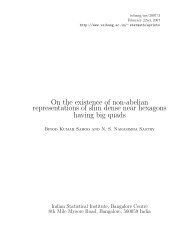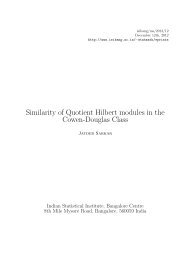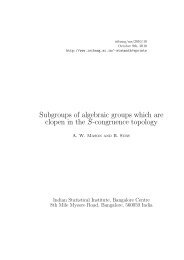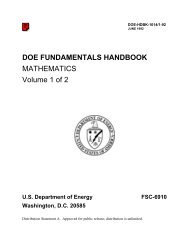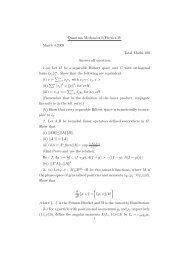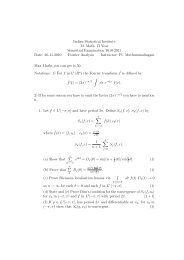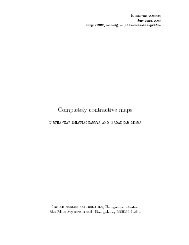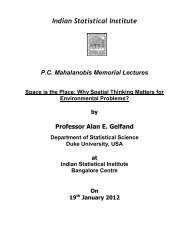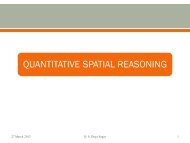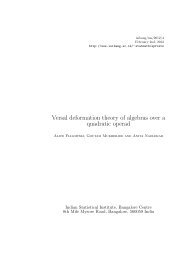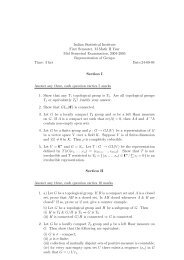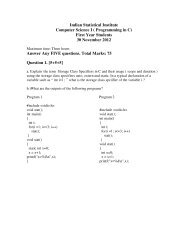CHOICE OF SCHEME FOR CLASSIFICATION - Indian Statistical ...
CHOICE OF SCHEME FOR CLASSIFICATION - Indian Statistical ...
CHOICE OF SCHEME FOR CLASSIFICATION - Indian Statistical ...
Create successful ePaper yourself
Turn your PDF publications into a flip-book with our unique Google optimized e-Paper software.
History<br />
History of India<br />
President of India<br />
Functions of the President of India<br />
Veto power of the President of India<br />
Veto power of the President of India in 1968<br />
Here, "History" is the ultimate Macro Subject; and "Veto power of the President of India<br />
in 1968" is the ultimate "bit" of Micro Subject. The top two links of the chain are<br />
certainly Macro Subjects; and equally certainly, the last two links have only the status of<br />
Micro Subject at the present time. Of the links 3 and 4, it is difficult to assert about their<br />
status. The trend in the world of books is to upgrade Micro Subjects as Macro Subjects.<br />
The different topmost or ultimate Macro Subjects are called `Main Subjects'. Obviously,<br />
the number of Main Subjects will be small, while the number of "bits" of Micro Subjects<br />
will be very large and tend towards infinity as time goes on. Therefore, it is usual to<br />
divide the Universe of Subjects into Main Subjects, at the first step. Traditionally a few<br />
Main Subjects have been recognised; and these are being added to in small doses. Due to<br />
the exigencies of notation, DC and therefore UDC have moved one step backwards and<br />
introduced in the schedule certain Comprehensions of Main Subjects and treated them as<br />
if each Comprehension of Main Subjects were itself a Main Subject. These are, "3 Social<br />
Sciences", "5 Pure Sciences", "6 Technology", and "9 General Geography, History, etc".<br />
2.4 Consensus of Philosophers<br />
2.4.1 Vedic System<br />
From the Vedic times downwards, the philosophers have been interested in the<br />
division of knowledge qua knowledge and not of subjects qua subjects. Moreover, they<br />
had only attempted to break down the Universe of Knowledge into a few broad divisions<br />
and arrange them in a helpful sequence. The Vedic sequence consisted of the following<br />
four Divisions of knowledge:<br />
1. ‘Dharma’, comprehending the ensemble of the modern Main Subjects<br />
collectively of Law, Religion, Ethics, and Sociology;<br />
2. ‘Artha’, comprehending the ensemble of the modern Main Subjects denoted<br />
by the term `Applied Sciences' - natural as well as social;



